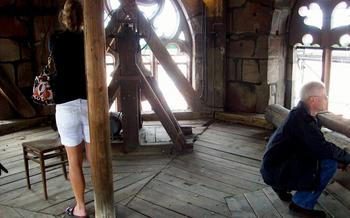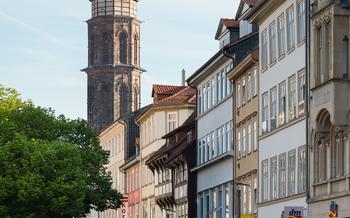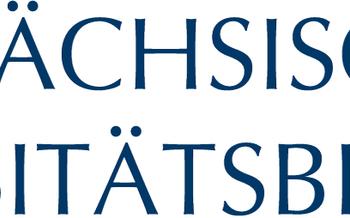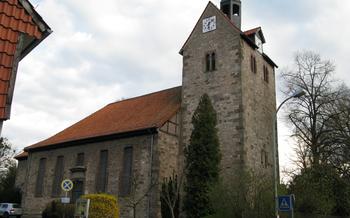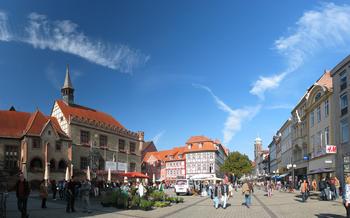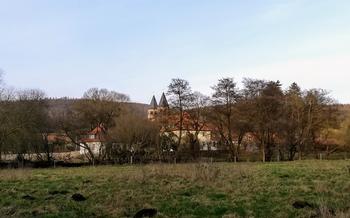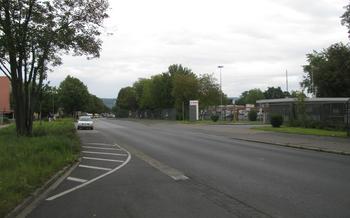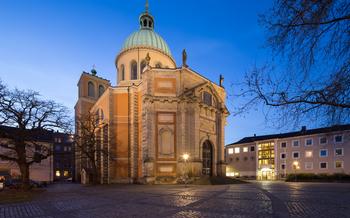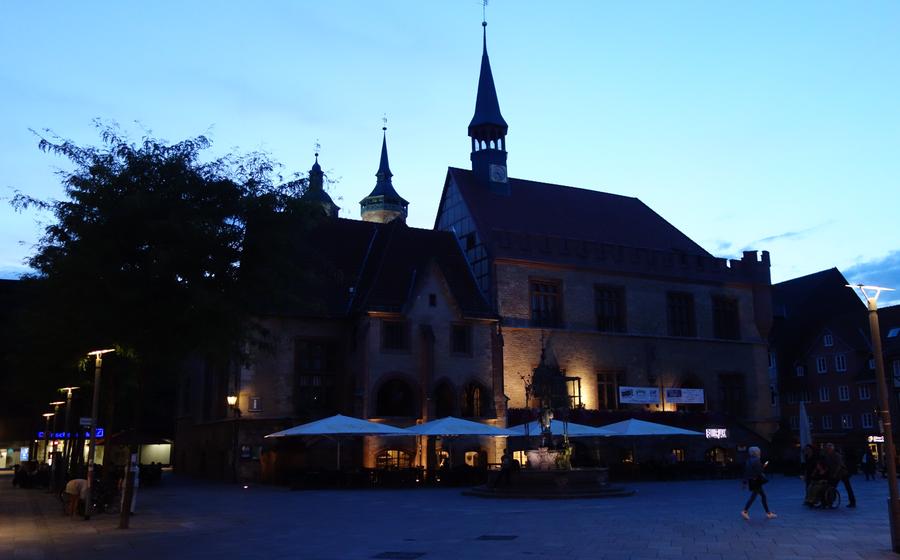
Museum of the History of Medicine
- Göttingen: A Vibrant Cultural City
- Museum of the History of Medicine: A Journey Through Medical Advancements
- Exploring the Museum's Highlights
- The Anatomical Collection: A Glimpse into Human Biology
- The Surgical Collection: Innovations in Medical Procedures
- The Obstetrical Collection: Celebrating the Miracle of Birth
- The Medical Instruments Collection: Tools of Healing
- The Historical Pharmacy: A Realm of Remedies
- Guided Tours: Unveiling Hidden Stories
- Accessibility and Facilities: Ensuring a Comfortable Visit
- Insider Tip: Hidden Gems and Secret Spots
Göttingen: A Vibrant Cultural City
Göttingen, a charming city nestled in the heart of Lower Saxony, Germany, boasts a rich history dating back to the 10th century. Renowned for its academic excellence, Göttingen is home to the prestigious Georg-August University, founded in 173The city has played a pivotal role in various fields of knowledge, including mathematics, physics, and medicine. Its contributions to academia and research have earned it a reputation as a leading intellectual center.
Göttingen's vibrant cultural scene further enhances its allure. The city hosts numerous cultural events throughout the year, including music festivals, theater performances, and art exhibitions. Its diverse cultural offerings cater to a wide range of interests, making Göttingen an attractive destination for both residents and visitors alike.
Museum of the History of Medicine: A Journey Through Medical Advancements
The Museum of the History of Medicine in Göttingen is an exceptional institution dedicated to preserving and showcasing the rich history of medical practices and advancements. Its extensive collection encompasses a diverse range of artifacts, specimens, and instruments, providing visitors with a captivating journey through the evolution of medicine.
The museum's exhibits offer a comprehensive overview of medical developments from ancient times to the present day. Visitors can explore displays on anatomical studies, pharmacology, surgery, obstetrics, and the history of medical instruments. Each section presents a unique perspective on the progress made in understanding the human body, treating diseases, and improving patient care.
The significance of the museum's collection lies in its ability to shed light on the historical context of medical practices. Through its exhibits, visitors gain insights into the challenges faced by physicians throughout history, the groundbreaking discoveries that transformed medical knowledge, and the societal and cultural factors that influenced healthcare practices.
The Museum of the History of Medicine stands as a testament to the remarkable contributions made by medical professionals over the centuries. Its collection serves as a valuable resource for researchers, students, and anyone interested in exploring the fascinating world of medical history.
Exploring the Museum's Highlights
The Museum of the History of Medicine in Göttingen boasts an impressive array of artifacts, specimens, and interactive displays, offering visitors a captivating journey through the evolution of medical practices and advancements. One of the museum's highlights is the Anatomical Collection, which houses a remarkable collection of preserved human specimens, providing a fascinating glimpse into the complexities of human biology.
The Pharmacological Collection showcases the evolution of drug discovery and pharmacology, featuring historical pharmaceutical equipment, rare medicinal preparations, and interactive displays that illustrate the development of modern medicines. Visitors can trace the origins of common drugs, explore the history of drug manufacturing, and gain insight into the role of natural products in medicine.
The Surgical Collection presents a comprehensive overview of the history of surgical techniques and instruments. Visitors can witness the evolution of surgical practices, from ancient tools to modern marvels, and learn about the pivotal role of anesthesia in revolutionizing surgical procedures. Interactive exhibits allow visitors to experience the challenges faced by early surgeons and appreciate the advancements that have transformed modern surgery.
The Obstetrical Collection celebrates the miracle of birth, showcasing historical birthing practices and tools that shed light on the contributions of obstetrics to maternal and infant health. Visitors can explore the cultural and societal influences on childbirth, gain insight into the role of midwives, and appreciate the medical advancements that have improved the safety and outcomes of childbirth.
The Anatomical Collection: A Glimpse into Human Biology
The Anatomical Collection at the Museum of the History of Medicine in Göttingen is an invaluable resource for understanding the intricate workings of the human body and the evolution of anatomical studies. Through preserved specimens, models, and interactive displays, visitors can delve into the complexities of human anatomy and gain insights into the historical practices and techniques that have shaped our understanding of the human form.
The collection features a diverse array of specimens, including meticulously dissected organs, skeletons, and anatomical models that showcase the intricate details of the human body. These specimens serve as a testament to the skill and dedication of anatomists throughout history, who painstakingly studied the human body to advance medical knowledge and improve patient care.
Among the highlights of the collection is a collection of anatomical wax models created by German anatomist Ludwig Thiele in the late 19th century. These life-like models depict various anatomical structures, including muscles, bones, and organs, with remarkable accuracy and detail. The models were used for teaching and research purposes and continue to impress visitors with their artistry and scientific precision.
The Anatomical Collection also includes a variety of historical instruments used for anatomical dissection and study. These instruments, such as scalpels, saws, and forceps, provide a glimpse into the methods and techniques employed by anatomists in the past. Visitors can learn about the evolution of surgical techniques and the challenges faced by early anatomists as they sought to understand the complexities of the human body.
Overall, the Anatomical Collection at the Museum of the History of Medicine offers a fascinating journey into the world of human anatomy and the history of medical education. Through its diverse collection of specimens, models, and instruments, the museum provides visitors with a unique opportunity to explore the intricate workings of the human body and gain a deeper appreciation for the advancements in anatomical knowledge that have shaped modern medicine.
The Surgical Collection: Innovations in Medical Procedures
The Surgical Collection at the Museum of the History of Medicine in Göttingen offers a fascinating glimpse into the evolution of surgical techniques and instruments. This section of the museum showcases the remarkable advancements that have been made in the field of surgery, from ancient practices to modern innovations.
Visitors can explore a wide range of historical surgical instruments, including scalpels, saws, forceps, and clamps. These tools provide a tangible connection to the past, demonstrating the ingenuity and skill of surgeons throughout the ages. Displays also highlight the evolution of surgical procedures, such as the development of anesthesia and the rise of minimally invasive techniques.
One of the highlights of the collection is a replica of an operating theater from the 19th century. This immersive exhibit allows visitors to step back in time and experience the conditions under which surgeries were performed in the past. It sheds light on the challenges faced by surgeons and the remarkable progress that has been made in surgical practices.
The Surgical Collection serves as a reminder of the incredible advancements that have been made in the field of surgery. It highlights the dedication and innovation of surgeons throughout history, who have worked tirelessly to improve surgical outcomes and save lives.
The Obstetrical Collection: Celebrating the Miracle of Birth
The Museum of the History of Medicine in Göttingen houses a comprehensive obstetrical collection that delves into the fascinating history of childbirth practices and tools. This section of the museum showcases the evolution of obstetrics, highlighting the significant contributions to maternal and infant health.
Visitors can explore a diverse range of artifacts, including historical birthing chairs, forceps, and incubators. These artifacts provide a glimpse into the challenges and advancements in obstetrics over the centuries. The collection also features a variety of educational displays that explain the cultural and societal influences on childbirth practices throughout history.
One of the highlights of the obstetrical collection is a replica of the first incubator for premature babies, invented by German physician Max Couveuse in 189This remarkable invention significantly improved the survival rates of premature infants, revolutionizing the field of neonatology.
The museum also sheds light on the role of midwives in traditional birthing practices. Midwives played a crucial role in assisting women during childbirth, providing both physical and emotional support. The collection includes a variety of tools and instruments used by midwives, offering a glimpse into their essential contributions to maternal healthcare.
Through its comprehensive obstetrical collection, the Museum of the History of Medicine celebrates the miracle of birth and the tireless efforts of medical professionals dedicated to ensuring the safety and well-being of mothers and infants.
The Medical Instruments Collection: Tools of Healing
The Medical Instruments Collection at the Museum of the History of Medicine in Göttingen unveils the fascinating evolution of medical technology through an array of historical instruments. From ancient surgical tools to modern diagnostic equipment, the collection showcases the ingenuity and advancements that have shaped medical practices over the centuries.
Visitors can marvel at the intricate craftsmanship of early surgical instruments, such as scalpels, forceps, and saws. These tools, often made of bone, bronze, or iron, demonstrate the skill and precision required by surgeons in the pre-anesthesia era.
The collection also features a variety of diagnostic instruments, including microscopes, stethoscopes, and X-ray machines. These innovations revolutionized medical diagnosis, enabling physicians to identify and understand diseases more accurately.
Interactive displays allow visitors to engage with the instruments and learn about their historical significance. They can simulate using a microscope to examine a blood sample or explore the inner workings of a stethoscope.
The Medical Instruments Collection not only showcases the evolution of technology but also highlights the impact of scientific advancements on medical practices. It provides a glimpse into the history of medicine and the tireless pursuit of innovation to improve patient care.
The Historical Pharmacy: A Realm of Remedies
Nestled within the Museum of the History of Medicine, the historical pharmacy offers a glimpse into the evolution of pharmaceutical practices. Step back in time as you explore antique apothecary cabinets and equipment, each telling a story of the ingenuity and dedication of past pharmacists. Discover the origins of modern medicines, from ancient herbal remedies to the development of synthetic drugs. Learn about the crucial role of pharmacies in healthcare throughout history, as they dispensed remedies, compounded medications, and provided invaluable advice to patients. This realm of remedies showcases the rich heritage of pharmacy and its contributions to human health and well-being.
Guided Tours: Unveiling Hidden Stories
Enhance your visit to the Museum of the History of Medicine by joining one of the guided tours offered in various languages. These tours provide an in-depth exploration of the museum's collection, allowing you to delve into the fascinating world of medical history.
Led by knowledgeable guides, the tours take you on a journey through the museum's highlights, shedding light on the significance of artifacts, specimens, and exhibits. You'll gain insights into the evolution of medical practices, the contributions of renowned physicians and scientists, and the cultural and societal influences that have shaped the field of medicine.
Whether you're a medical professional, a history enthusiast, or simply curious about the human body and its treatment, the guided tours offer a personalized and engaging experience. They provide an opportunity to ask questions, delve deeper into specific topics, and uncover hidden stories that may not be immediately apparent to the casual visitor.
Book your guided tour in advance to secure your spot and make the most of your visit to the Museum of the History of Medicine. Let the knowledgeable guides unveil the secrets of medical history and bring the past to life before your eyes.
Accessibility and Facilities: Ensuring a Comfortable Visit
The Museum of the History of Medicine is committed to providing a welcoming and accessible environment for all visitors. Accessibility features include wheelchair ramps, elevators, and designated parking spaces for visitors with disabilities. The museum also offers a variety of amenities to enhance your visit, such as restrooms, lockers, and a cloakroom.
For those who require additional assistance, the museum staff is happy to provide wheelchairs, magnifying glasses, and other assistive devices upon request. Guided tours are also available in various languages, ensuring that visitors from all backgrounds can fully appreciate the museum's collection.
By providing these amenities and services, the Museum of the History of Medicine aims to create an inclusive and enjoyable experience for all visitors, regardless of their abilities or needs.
Insider Tip: Hidden Gems and Secret Spots
As you delve deeper into the Museum of the History of Medicine, keep an eye out for hidden gems and secret spots that often go unnoticed by casual visitors. In the anatomical collection, seek out the intricately preserved specimens of human organs and tissues, revealing the wonders of the human body. Within the pharmacological collection, discover the ancient remedies and forgotten cures that paved the way for modern medicine.
Unveil the stories behind the surgical instruments, learning about the evolution of techniques that have transformed countless lives. In the obstetrical collection, uncover the fascinating history of childbirth practices and the instruments that aided in the safe delivery of new life.
The museum's library holds a treasure trove of rare medical books and manuscripts, offering a glimpse into the minds of pioneering physicians and scientists. Take the time to explore these hidden gems, and you'll be rewarded with a deeper understanding of medical history and the remarkable contributions made by Göttingen's medical pioneers.
